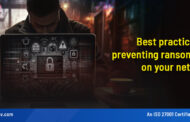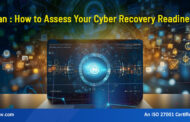Phishing isn’t new. Threat actors have used social engineering tactics like this for decades, posing as trusted contacts and sending sensitive information through emails or text messages to unsuspecting victims.
These attacks are highly effective according to many data points. Malicious actors most commonly use phishing (56%) to infiltrate a network and launch ransomware.
Cybercriminals are always trying to craft legitimate-looking phishing communications, but some are better than others. Because of careless drafting, phishing communications are usually easy to spot because they are filled with spelling and grammar errors.
Even so, cybercriminals are turning to AI-driven content tools to advance their operations as these tools become more widely available at low or no cost. This is accomplished in part by using artificial intelligence to make phishing emails and texts appear more realistic than ever before, increasing the chances their unsuspecting victims will click on a malicious link.
As AI-crafted communications usher in a new era of organizational security, employees are even more important in defending against attempted breaches. However, merely giving employees the advice to look for “traditional” characteristics of phishing is no longer enough to keep organizations safe. The right technology, such as spam filters and multi-factor authentication, is critical to safeguarding organizations from phishing and ransomware, but employee education can make or break efforts.
Ransomware remains the #1 delivery method through phishing
Recent research indicates that phishing is the number one attack vector for delivering ransomware. It’s easy to see why attackers are choosing it as their weapon of choice, as this technique continues to be successful. 80% of organizations report that at least one employee has fallen victim to a simulated phishing attempt, according to phishing assessments conducted by the Cybersecurity and Infrastructure Security Agency.
Across all industries and geographical regions, ransomware continues to impact organizations of all sizes. While most business leaders believe they are ready to defend against ransomware (78% say they are “very” or “extremely” prepared), half have been hit by ransomware attacks in recent months.
Protecting the enterprise against phishing through employee education
Organizations must educate their employees to protect themselves from ransomware, since most of it is delivered through phishing. It’s important to note, however, that there is no one-size-fits-all education program. These training efforts must be tailored to the unique needs of each enterprise. Several types of services and programs help users understand and detect phishing and other cyber threats, which can be a great starting point for developing a comprehensive employee security awareness program.
Security awareness training: Threat actors consider employees to be high-value targets. Keeping an organization safe requires an ongoing cyber-awareness education program, which is constantly assessed and updated to reflect the changing threat landscape. We offer SaaS-based security awareness training based on the most current and relevant security threats through the eScan Security Awareness and Training Service. With the help of this service, IT, security, and compliance leaders can create a cyber-aware culture where employees are more likely to recognize attacks and avoid falling victim to them. Regulatory and industry compliance training is also included as a bonus for organizations with compliance needs.
Phishing simulation: An organization’s employees can practice identifying malicious communications by receiving simulated phishing emails so they know what to do when they are attacked by a threat actor. Users are trained on what steps to take when they suspect they might be phished by the eScan Phishing Simulation Service, which uses real-world simulations to test their awareness and vigilance against phishing attacks.
Keeping up with threats requires security awareness programs
The introduction of new technologies will invariably lead to cybercriminals finding ways to abuse these tools for illicit purposes. Organizations must strengthen their security teams and make employees more diligent about detecting threats. To ensure learners and employees have the most up-to-date and relevant knowledge to keep themselves (and the organization’s data) safe, organizations must evaluate and evolve their cyber-awareness programs. Contact Us







